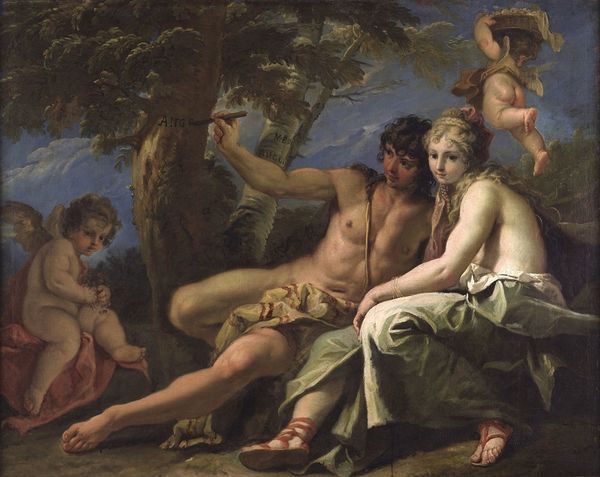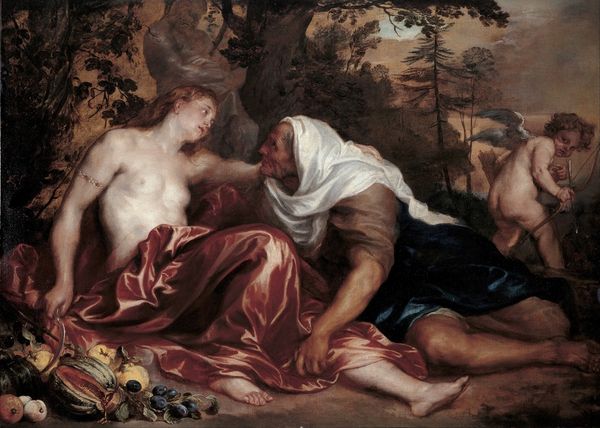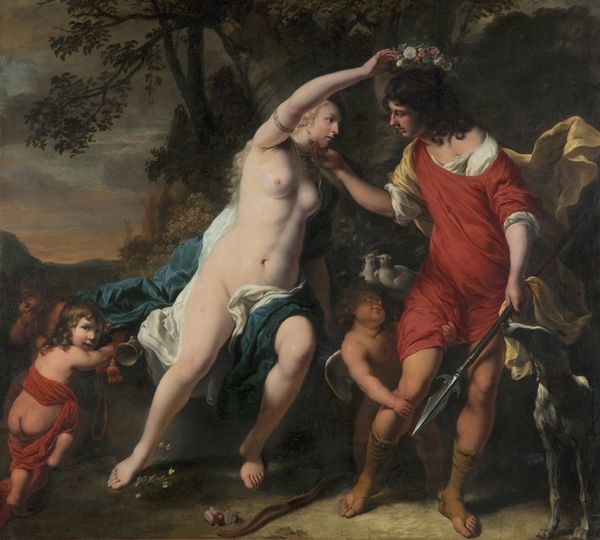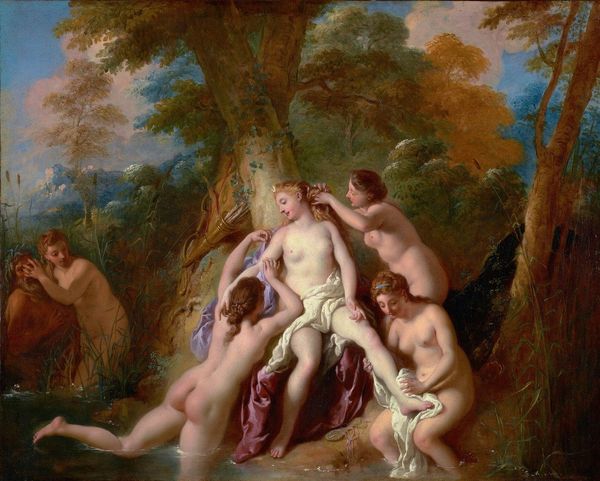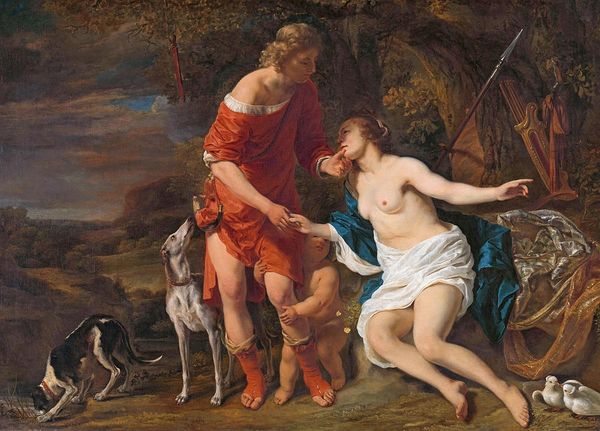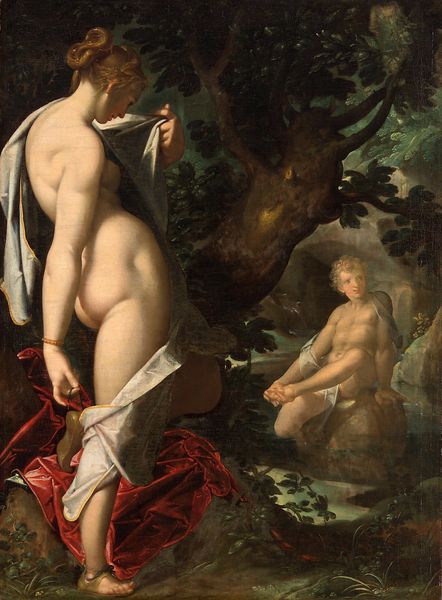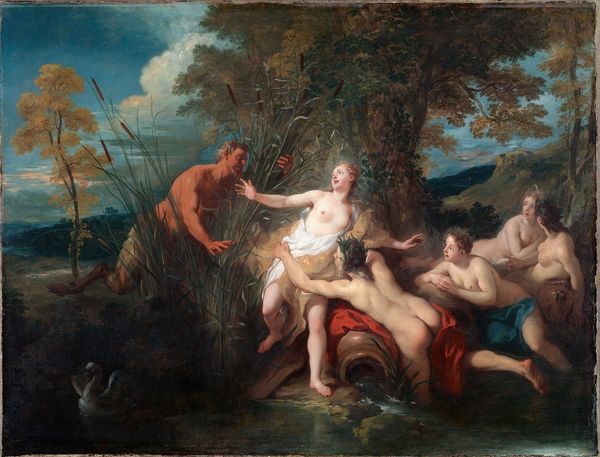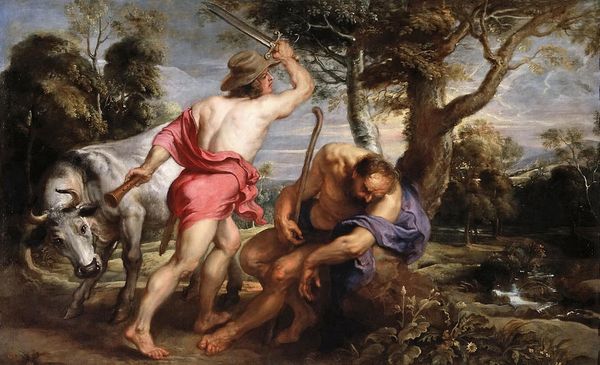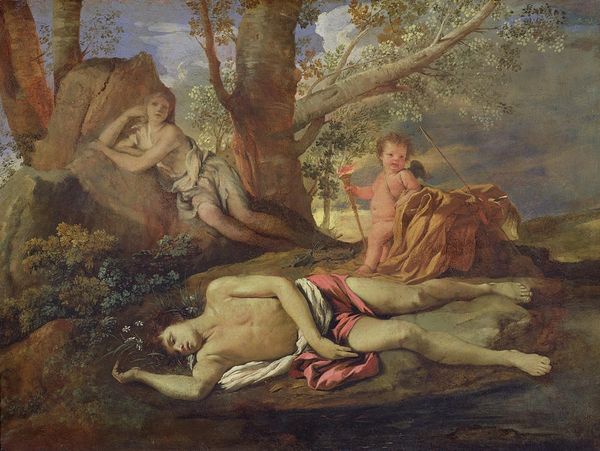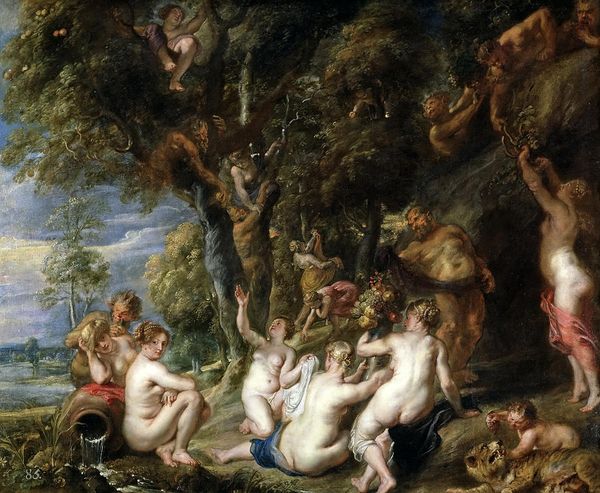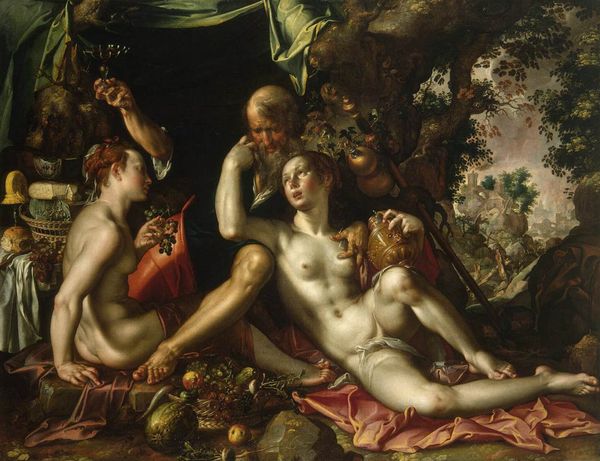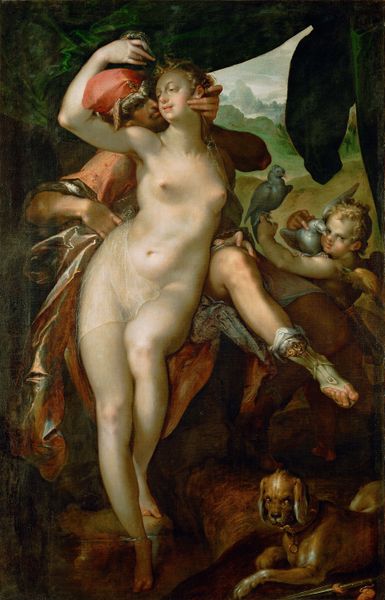
oil-paint
#
portrait
#
allegory
#
baroque
#
oil-paint
#
landscape
#
figuration
#
oil painting
#
animal portrait
#
painting painterly
#
genre-painting
#
history-painting
#
nude
#
realism
Copyright: Public domain
Editor: Here we have what is believed to be Anthony van Dyck's "Diana and her Nymph Surprised by Satyr", an oil painting that depicts a mythological scene. It’s visually striking because of the contrast between the pale skin of the figures and the dark forest. How do you interpret this work within its historical context? Curator: Considering the era, it’s vital to see how this painting engages with ideas about power, gender, and societal norms. We have Diana, a powerful female figure, rendered vulnerable in sleep, observed by a Satyr – a figure often linked with male lust and disorder. Van Dyck’s portrayal subtly critiques the dynamics of surveillance and male dominance, and the precarity of the female body under patriarchal gaze. Do you notice how the hunted animals mirror the vulnerability of Diana and her Nymph? Editor: Yes, that's an interesting connection. The presence of those animals certainly amplifies that feeling of being watched and the threat of violence. It's unsettling. Curator: Exactly! It speaks volumes about the complex relationship between the sexes in that historical moment. The act of “surprising” underscores a disruption of the female sphere, making a political commentary through a classical allegory. How does this awareness impact your experience of the artwork? Editor: I see it less as a simple mythological scene and more as an uncomfortable mirror reflecting power dynamics. Understanding that context gives the painting a much darker, more relevant resonance. Curator: Precisely! By engaging with the socio-political implications, we move beyond a superficial aesthetic appreciation and confront the historical narrative that still influences contemporary society. Editor: This definitely provides a new lens through which to consider historical artworks, a perspective that is so much more profound. Curator: Indeed. By dissecting art this way, it ceases to be merely decorative and becomes a crucial point of engagement.
Comments
No comments
Be the first to comment and join the conversation on the ultimate creative platform.
